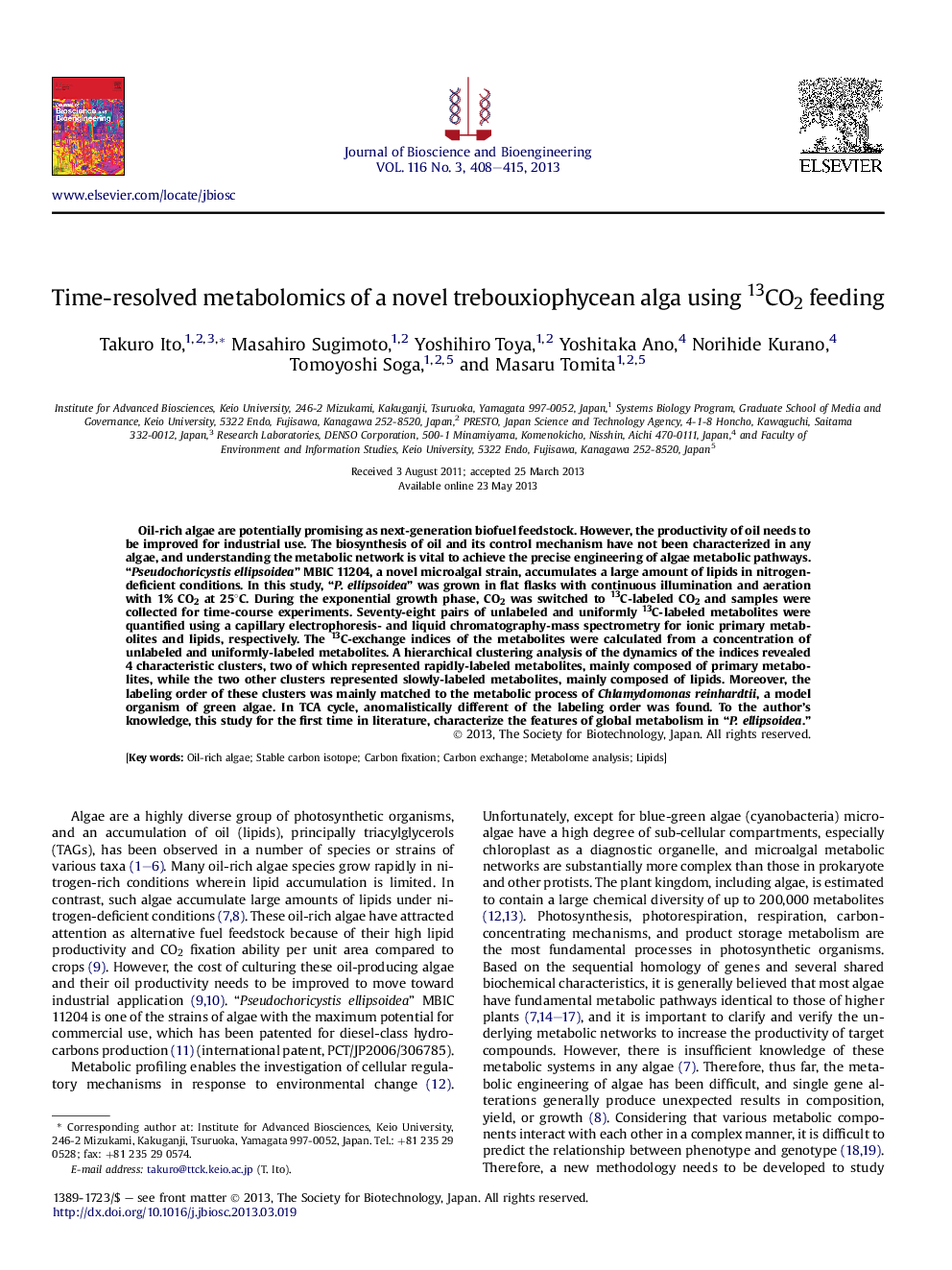| Article ID | Journal | Published Year | Pages | File Type |
|---|---|---|---|---|
| 20777 | Journal of Bioscience and Bioengineering | 2013 | 8 Pages |
Oil-rich algae are potentially promising as next-generation biofuel feedstock. However, the productivity of oil needs to be improved for industrial use. The biosynthesis of oil and its control mechanism have not been characterized in any algae, and understanding the metabolic network is vital to achieve the precise engineering of algae metabolic pathways. “Pseudochoricystis ellipsoidea” MBIC 11204, a novel microalgal strain, accumulates a large amount of lipids in nitrogen-deficient conditions. In this study, “P. ellipsoidea” was grown in flat flasks with continuous illumination and aeration with 1% CO2 at 25°C. During the exponential growth phase, CO2 was switched to 13C-labeled CO2 and samples were collected for time-course experiments. Seventy-eight pairs of unlabeled and uniformly 13C-labeled metabolites were quantified using a capillary electrophoresis- and liquid chromatography-mass spectrometry for ionic primary metabolites and lipids, respectively. The 13C-exchange indices of the metabolites were calculated from a concentration of unlabeled and uniformly-labeled metabolites. A hierarchical clustering analysis of the dynamics of the indices revealed 4 characteristic clusters, two of which represented rapidly-labeled metabolites, mainly composed of primary metabolites, while the two other clusters represented slowly-labeled metabolites, mainly composed of lipids. Moreover, the labeling order of these clusters was mainly matched to the metabolic process of Chlamydomonas reinhardtii, a model organism of green algae. In TCA cycle, anomalistically different of the labeling order was found. To the author's knowledge, this study for the first time in literature, characterize the features of global metabolism in “P. ellipsoidea.”
